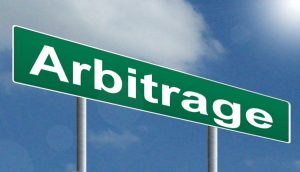Southern California has a problem. Its base water supply is at risk due to aging infrastructure and declining conditions in the Delta that make it increasingly difficult to convey water through the Delta. A Saturday outing to Descanso Gardens in La Cañada Flintridge, California led to an unexpected opportunity to hear why the Southern California Water Committee (“SWSC”) sees California WaterFix as the solution.
Appellate Court Wheeling Decision Puts More Pressure on Northern California Water Supplies
Last June, the Court of Appeal of the First Appellate District issued an opinion addressing the long-standing dispute between the Metropolitan Water District of Southern California and the San Diego County Water Authority regarding lawful wheeling rates for water conveyed to San Diego through Metropolitan’s Colorado River Aqueduct and local distribution system. Reversing a superior court decision, the Appellate Court held that Metropolitan’s inclusion of State Water Project costs in its calculation of wheeling rates was lawful. Putting aside legal debate, Hydrowonk focuses on the economic consequences of the decision.
What is California’s Tab for 1,2,3-TCP Groundwater Contamination?
On July 18, the State Water Resources Control Board adopted a drinking water standard for the regulation of the contaminant 1,2,3-Trichloropropane (TCP). The Division of Drinking Water set the standard for TCP at 5 parts per trillion (ppt) as a maximum contaminant level. If public water systems exceed the standard, they will be required to notify their customers and take corrective action. Based on recent actions taken by the City of Bakersfield to correct their TCP problems, the total tab for California’s public water systems will exceed $4 billion.
Changes in North Dakota’s Water Laws Potentially Open up More Water Supply for Hydraulic Fracturing
While many areas of the United States are recovering from drought conditions, there is one area which is headed deeper into extreme drought: the Northern Plains. While a series of storms in May and June caused widespread flooding and damage in Oklahoma, these storms largely missed the Dakotas and Montana. According to the most recent US Drought Monitor as of August, Montana and North Dakota were the only states in the US that had any exceptional drought. Currently, 99.59% of the Roughrider State is in some form of drought, and 43.84% of the state faces either extreme or exceptional drought. At the beginning of the calendar year, only 6.13% of the state had some form of drought, and there was no drought more severe than “abnormally dry,” the least severe drought designation.


